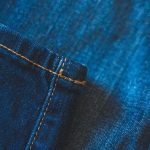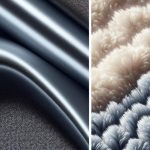When it comes to selecting the strongest fabric for your needs, it's crucial to consider the intricate weave of monofilament fabric. Just like a tightly-knit family, monofilament fabric exhibits exceptional tensile strength and resilience, making it a top contender in the world of industrial textiles.
In this detailed exploration, we will analyze the comparative strength of monofilament fabric against industry counterparts such as nylon, polyester, and polypropylene. Through meticulous tensile strength testing methods and a thorough examination of environmental impact considerations, we will uncover the unparalleled durability and longevity of monofilament fabric.
Whether you're in heavy-duty industries or seeking long-lasting solutions, understanding the strength of monofilament fabric is essential for mastery in your field.
Key Takeaways
- Material composition and weaving techniques are crucial factors in determining the strength of monofilament fabric.
- Monofilament fabric offers advantages such as transparency and flexibility, making it suitable for applications requiring these properties.
- Polyester fabric excels in terms of durability and resilience, making it the ideal choice for outdoor gear and industrial applications.
- Monofilament fabric demonstrates higher tensile strength compared to polypropylene, making it a compelling choice for applications requiring superior strength.
Understanding Monofilament Fabric Strength
When testing monofilament fabric strength, you should consider the force exerted on the material in real-world conditions. Material composition plays a crucial role in determining the overall strength of monofilament fabric. The choice of material, whether it's nylon, polyester, or another polymer, directly impacts the fabric's tensile strength and durability.
For instance, nylon monofilament fabric is known for its high strength and abrasion resistance, making it suitable for applications that require robust and long-lasting materials. On the other hand, polyester monofilament fabric offers excellent dimensional stability and low moisture absorption, adding to its strength and resilience in various environments.
Fabric weaving techniques also significantly influence the strength of monofilament fabric. Different weaving patterns, such as plain weave, twill weave, or satin weave, can impact the fabric's tensile strength and overall performance. The weaving technique determines how the individual filaments are arranged and intertwined, affecting the fabric's ability to withstand external forces and stresses.
Understanding the interplay between material composition and fabric weaving techniques is essential for evaluating and harnessing the strength of monofilament fabrics in diverse applications.
Comparison With Nylon Fabric
Comparing monofilament fabric with nylon fabric reveals distinct differences in strength and performance. When considering fabric tensile strength, nylon and monofilament each have unique properties that affect their overall performance.
Nylon fabric is known for its exceptional tensile strength, making it a popular choice for a wide range of applications. Its ability to withstand significant stress without breaking or stretching excessively makes it a reliable option for various uses.
On the other hand, monofilament fabric, while also strong, may not always match the tensile strength of nylon. However, monofilament fabric offers other advantages such as transparency, flexibility, and resistance to abrasion.
In terms of nylon vs monofilament, it's important to consider the specific requirements of the intended application. Nylon fabric excels in situations where high tensile strength is paramount, such as in heavy-duty outdoor gear or safety equipment.
Monofilament fabric, on the other hand, may be more suitable for applications where transparency and flexibility are essential, such as in certain medical and industrial settings. Understanding the distinct properties of each fabric is crucial in selecting the most appropriate material for a particular purpose.
Durability Against Polyester Fabric
In evaluating the durability of monofilament fabric against polyester fabric, you'll find distinct differences in their performance and resilience. Durability testing has shown that polyester fabric demonstrates exceptional strength and resistance to wear and tear. The fabric construction of polyester involves interwoven fibers, creating a robust and long-lasting material that can withstand repeated use and washing.
When compared to monofilament fabric, polyester excels in terms of durability due to its ability to maintain its integrity even under harsh conditions.
When subjected to rigorous durability testing, polyester fabric has proven to be highly resistant to abrasion and tearing. It is also able to retain its shape and color after prolonged use and resilient against stretching and shrinking.
These qualities make polyester fabric an ideal choice for applications requiring longevity and robustness. The fabric's construction and composition contribute to its exceptional durability, making it a reliable option for various uses, from outdoor gear to industrial applications.
Therefore, when considering durability against polyester fabric, it's evident that its construction and performance outshine monofilament fabric in numerous aspects.
Strength Analysis With Polypropylene Fabric
When comparing the strength of polypropylene fabric to monofilament fabric, it's important to consider their durability in different environments.
Analyzing the performance of polypropylene fabric in various conditions will provide valuable insights into its strength and suitability for specific applications.
Understanding the differences in strength and durability between these two types of fabric is essential for making informed decisions about their use.
Polypropylene Vs Monofilament Strength
You'll find that monofilament fabric outperforms polypropylene in strength testing. In a polypropylene vs nylon comparison, monofilament fabric demonstrated superior strength in a tensile test. This was evident in the following ways:
- Monofilament fabric exhibited higher tensile strength compared to polypropylene.
- Monofilament fabric displayed greater resistance to stretching and deformation under pressure.
- Monofilament fabric showcased enhanced durability and longevity in strenuous conditions.
These findings highlight the robust nature of monofilament fabric, positioning it as a compelling choice for applications where superior strength is paramount.
When considering strength analysis with polypropylene fabric, it becomes evident that monofilament fabric offers a more resilient and enduring solution for various industrial and commercial needs.
Durability in Different Environments
Explore the durability of polypropylene fabric in different environments and its strength analysis compared to monofilament fabric. When considering durability in different environments, polypropylene fabric demonstrates remarkable wear resistance, especially in extreme conditions. It is designed to withstand long-term exposure to harsh elements, making it an ideal choice for various applications. Maintenance factors such as resistance to mold, mildew, and UV degradation contribute to its longevity, ensuring that it maintains its strength over time. To further illustrate the strength analysis, the table below compares the durability of polypropylene and monofilament fabric in different environments.
| Durability Factors | Polypropylene Fabric | Monofilament Fabric |
|---|---|---|
| Wear Resistance | High | Moderate |
| Long-Term Exposure | Excellent | Good |
| Maintenance Factors | Resistant | Prone to degradation |
This comparison highlights the superior durability of polypropylene fabric, especially in demanding conditions and long-term use.
Tensile Strength Testing Methods
To accurately determine the tensile strength of monofilament fabric, use standardized testing methods to ensure reliable results. Material properties and testing methods play a crucial role in evaluating the tensile strength of monofilament fabric. When conducting tests, it's important to consider load capacity and stress-strain analysis to obtain accurate and meaningful data.
The following testing methods are commonly employed to assess the tensile strength of monofilament fabric:
- Single Yarn Testing: This method involves testing individual yarns to evaluate their tensile strength and elongation at break. It provides insights into the inherent strength of the yarn itself.
- Strip Testing: By subjecting a strip of monofilament fabric to controlled tension, this method allows for the assessment of the fabric's tensile properties, including maximum load and elongation.
- Grab Testing: This method involves clamping a specific width of the fabric and pulling it apart to measure the force applied until the fabric ruptures. It provides valuable information about the fabric's strength and elongation under tension.
Using these standardized testing methods provides a comprehensive understanding of the tensile strength of monofilament fabric, facilitating informed decision-making in various applications.
Environmental Impact Considerations
When assessing monofilament fabric, you can consider its environmental impact from both production and disposal perspectives.
The production of monofilament fabric involves the use of petrochemicals and energy-intensive processes, which can contribute to air and water pollution.
Additionally, the disposal of monofilament fabric at the end of its lifecycle raises concerns due to its non-biodegradable nature, potentially leading to long-term environmental impacts.
To address these concerns, it's essential to explore sustainable alternatives that minimize the environmental impact.
Sustainable alternatives may include the use of recycled materials in fabric production, such as recycled polyester or nylon, which can help reduce the reliance on virgin petrochemicals.
Furthermore, exploring biodegradable options or fabrics made from natural fibers could offer environmentally friendly alternatives to traditional monofilament fabric.
Assessing the environmental impact of fabric choices is crucial for making informed decisions that align with sustainable practices and environmental stewardship.
Applications in Heavy-Duty Industries
Considering the demanding requirements of heavy-duty industries, monofilament fabric proves to be an ideal choice for its exceptional strength and durability. Industrial applications in heavy-duty industries benefit greatly from the use of monofilament fabric due to its ability to withstand harsh conditions and heavy loads. This versatile material has proven to be invaluable in a variety of heavy-duty applications, including:
- Geotextiles: Monofilament fabric is used in geotextile applications to provide reinforcement and stabilization in soil, making it ideal for heavy-duty construction projects and infrastructure development.
- Filtration Systems: The exceptional strength of monofilament fabric makes it a preferred choice for heavy-duty filtration systems in industrial settings, ensuring efficient and reliable filtration of liquids and gases.
- Conveyor Belts: The superior durability and resistance to abrasion make monofilament fabric an excellent choice for heavy-duty conveyor belts, ensuring reliable and long-lasting performance in industrial environments.
Moreover, monofilament fabric undergoes rigorous strength testing to ensure its capability to withstand heavy-duty industrial applications, making it a reliable and resilient option for various industrial needs.
Maintenance and Longevity Factors
Ensure that you regularly inspect and clean monofilament fabric to maintain its longevity and performance in heavy-duty applications. Regular inspection allows you to identify any wear and tear, enabling timely repairs or replacements to prevent further damage. When cleaning, use mild soap and water, avoiding harsh chemicals that could degrade the fabric. Gently scrubbing with a soft brush and rinsing thoroughly will help remove dirt and debris that could weaken the fabric over time.
Proper storage is also crucial for maximizing the longevity of monofilament fabric. When not in use, store the fabric in a cool, dry place away from direct sunlight to prevent UV damage and deterioration. Additionally, avoid folding or creasing the fabric, as this can weaken its structure. Instead, roll the fabric for storage to maintain its integrity.
In heavy-duty applications, consider implementing a regular maintenance schedule to ensure optimal performance. This may include periodic tension adjustments and monitoring for any signs of stress or strain. By following these maintenance tips, you can enhance the longevity of monofilament fabric and maximize its effectiveness in demanding industrial settings.
Frequently Asked Questions
Can Monofilament Fabric Be Used for Outdoor Applications in Extreme Weather Conditions?
In extreme weather conditions, monofilament fabric is durable and suitable for outdoor applications. Its strength and resistance make it a reliable option for withstanding harsh elements, ensuring longevity and performance in challenging environments.
How Does Monofilament Fabric Compare to Other Materials in Terms of Resistance to UV Radiation?
When comparing monofilament fabric to other materials in terms of resistance to UV radiation, it exhibits excellent chemical resistance and durability. Its ability to withstand UV exposure makes it a reliable choice for outdoor applications.
Are There Any Specific Maintenance Requirements for Monofilament Fabric to Ensure Longevity?
To ensure longevity, specific maintenance requirements for monofilament fabric include regular cleaning methods and proper care to maintain its durability. Following these guidelines will help maximize the fabric's lifespan and performance.
What Are the Potential Environmental Impacts of Using Monofilament Fabric in Heavy-Duty Industries?
When using monofilament fabric in heavy-duty industries, be aware of potential environmental impact. Sustainability concerns arise due to its non-biodegradable nature. Proper disposal and recycling are essential to mitigate these impacts.
Is Monofilament Fabric Suitable for Use in Applications Requiring High Levels of Abrasion Resistance?
In applications requiring high levels of abrasion resistance, monofilament fabric offers exceptional durability and strength. Its ability to withstand heavy-duty use in industrial settings makes it a reliable choice for outdoor durability and UV resistance, with minimal maintenance requirements.
- Can You Get Organza Wet? - April 23, 2024
- Why Is Organza so Popular? - April 23, 2024
- What Do You Wear With Organza? - April 23, 2024








